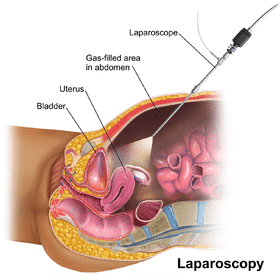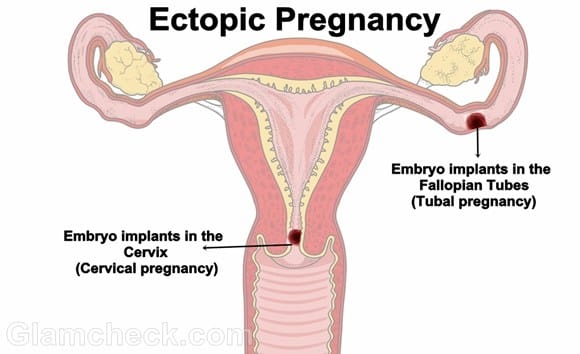

Jinemed is an excellent center on gynecologic surgeries with its infrastructure. Our staff can do all kinds of gynecologic surgeries from hysteroscopy to laparoscopy and hysterectomy.
Outpatient Surgeries are done to solve fertility problems or to make the couple ready for the IVF procedure. Additionally, both outpatient and inpatient surgeries are done for any gynecologic problem with great success
Some of the surgeries done at Jinemed
- The analysis and operation of the uterine cavity via Hysteroscopy
- Removal of Myomas, Cysts, Fibroids
- Tubal Reversal,
- Hydrosalpinx Removal
- Activation of follicles on PCO patients via ovarian drilling
- Removal of cancer cells
Urogynecologic Surgeries for Urinary Incontinence
Laproscopy Diognosis
To diagnose certain problems, a doctor needs to look directly into the abdomen and at the reproductive organs. this can be done with laproscopy.
The word laproscopy comes from the Greek words that means “look into the abdomen.” A laproscope is a small telescope that is inserted into the abdomen through a small incision(cut). It brings light into the abdomen so the doctor can see inside. Laproscopy is usually done on an outpatient basis– you don’t have to stay in the hospital overnight.
This pamphlet explains why you might need laproscopy. It also tells you what to expect during and after the procedure.
Use of laproscopy
There are several reasons why laproscopy may be recommended. If your doctor suspects that you have a certain problem, he or she may use laproscopy to confirm the diagnosis. Laproscopy may be used if you have problems with infertility or if you want to be sterilized. It is also used to check for ectopic pregnanacy, causes of pelvic pain, and masses.
Besides using the laproscope to look into the abdomen to diagnose a problem , your doctor can use it for treatment as well, for some procedures,laproscopy has replaced the need for Laparotomy.Laproctomy involves opening the abdomen to operate on reproductive organs.


Diagnosis and Surgery
Laproscopy is often used to diagnose causes of abdominal pain.If the doctor finds that he or she can treat the condition during the procedure,diagnostic laproscopy can turn into operative laproscopy. This procedure is used to treat many helth problems.Before undergoing laproscopy, you and your doctor will discuss the procedure and any other treatment.
Endometriosis. Tissiue like endometrium (the lining of the uterus) some times grows in places outside of the uterus. The tissue bleeds every month, as with a menstrual cycle.This condition is called endometriosis. It can cause pain, scar tissue, and infertility.One way to be certain that endometriosis is present is by laproscopy.Sometimes,endometriosis can also be treated through the laproscope.
Adhesions. Sometimes tissues in the abdomen stick together and form scar tissue called adhesions.This can happen because of infection, endometriosis, or surgery. Adhesions can cause pain. They often can be seperated during the laproscopy.
Fibroids. Fibroids are growths that form on the inside,outside,or within the wall of the uterus. Laproscopy can diagnose some fibroids.
Ovarian Cysts Overies sometimes develop cysts(fluid-filled scas). These cysts may be harmless, causing only mild pain. Some cause infertility or menstrual disorders. Some ovarian cysts may disappear after a short time. If they don’t , your doctor may choose to remove them during laproscopy.
Hyserectomy. The laproscope can used to assist in a vaginal hysterectomy(removal of the uterus through the vagina). The laproscope is used to help the doctor see inside the abdomen during part of the surgery. laproscopy can also assist with the removal of the ovaries. It can be done to remove ovaries alone. whether or not the uterus has already been removed.
Infertility and sterlization
Women who have trouble getting pregnant may have laproscopy to find problems like endometriosis or cysts. With laproscopy, your doctor can also tell whether the fallopian tubes are blocked.
Laproscopy is also used for Sterilization. In this operation , the doctor uses the laproscope as a guide to block the fallopian tubes by cutting, clipping, or burning them. It is meant to be a permanent method of birth control.
Ectopic Pregnancy
When a women has pain in her lower abdomen during early pregnanacy, the doctor may suspect an ectopic pregnancy, An ectopic pregnancy is one that may be located in the tube instead of the uterus. It may rupture the tube and cause abdominal bleeding that may require emergency surgery. The doctor can perform a laproscopy to diagnose and often treat an ectopic pregnancy.


Benifits of Laproscopy
In the past, most surgery involving reproductive organs was done by laparotomy. Now , many of these same procedures are done through the laproscope. There are many benfits to laproscopy- a shorter hospital stay , smaller incisions, and a shorter recovery.
The Procedure
You will be given medication to block the pain before the doctor begains the laproscopy. The anesthesia used depends on the type of procedure, your doctor’s advice, and your personal choice. General anesthesia is usually used so that you will not be awake. If local or regional anesthesia is used , you will be awake.
After the anesthesia is given, small cut is made below or inside the navel. A gas, such as carbon dioxide or nitrous oxide, is usually put into the abdomen. The gas swells the abdomen so the pelvic reproductive organs can be seen more clearly.
Your body will be tilted slightly with your feet raised higher than your head. This shifts some of the abdominal organs toward the chest and out of the way.
The laproscope is placed through the cut. Another cut is often made above the public region. Through this cut , an instrument is used to move the organs into view. One to four small cuts may be made, 1/4- 1/2- inch wide. A device called a uterine manipulator may be placed in the uterus through the vagina to move the uterus during the procedure.
Usually, the laproscope projects images of the surgery onto a television screen. This makes the image larger and easier for the doctor to see. These images can be photographed for later viewing.
Other surgical instruments can be inserted through the scope or through another small cut.
Various types of instruments can be used:
Medical surgical instruments, such as scissors, forceps, and clamps.
Electosurgical instruments that use electric current through the laproscope to perform surgery.
Laser that use a high-energy light beam to perform the same procedure as electosurgery.
After the rocedure, the instruments are removed and the gas released. The cuts are then closed, usually with stitches that dissolve. In a few hours you can go home.You should plan to have some one take you home and stay with you, at least for awhile.
Possible Problems
Although problems seldom occur with laproscopy, there some coplications. You may have some bleeding, reactions to the anesthesia, or injury to the other organs. The most common organs injured during the procedure are the blood vessels that surround the lower abdomen, the bowel, and the urinary tract. A follow-up laparotomy may be needed, which will require thatyou be admitted to the hospital. There is also a risk of infection after the procedure.
More common problems include:
Nausea
Pain around the cuts made in your abdomen
Scatchy throat if a breathing tube was used during general anesthesia
Abdominal cramps
Discharge(like your period) that lasts a few days
Swollen abdomen
Tender navel
Shoulder pain
Call your doctor if you are bleeding from incision, ifyou have fever, or if you are unable to urinate.
Recovery
recovery time from laparoscopy is much shorter than that from regular surgery. It is safe to resume normal activities as soon as you feel up to it, usually within a few days. If you are sexually active, talk with your doctor about when you can have sex again.
There are many benefits to laparoscopy– a shorter hospital stay, smaller incisions, and a shorter recovery.



